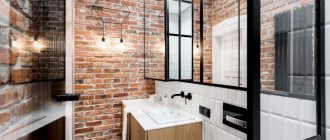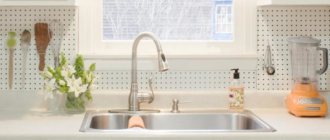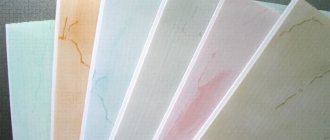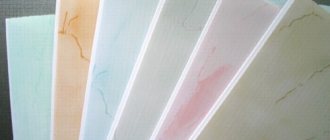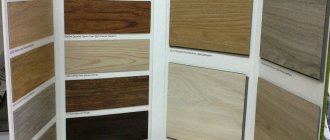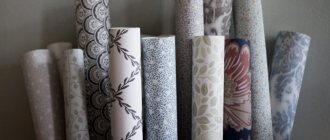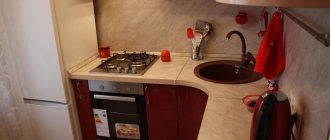When asked how to decorate a kitchen wall, housewives usually answer: tiles. Tiles are not only the most popular, but also the most convenient solution. A good choice will add character and aesthetics to your kitchen interior. Modern kitchen tiles have many options, from traditional to trendy subway tiles, azulejos to tiles. What do you need to know about kitchen tiles and what are the trendiest designs, colors and solutions?
Tiles are very common in the kitchen. Until recently, traditional petals dominated walls; today there are many other solutions. No matter what tile pattern you choose, you should keep practicality in mind. Due to the fact that the kitchen is one of the most used household rooms, it only has space for tiles with the appropriate parameters. Kitchen tiles should be easy to clean, moisture-resistant, and scratch-resistant.
How to choose tiles for the kitchen?
Kitchen tiles should always be selected in accordance with the furniture and design style, and not vice versa. Tiles on the wall can complement or match the entire arrangement, or vice versa - remain in contrast. With trendy kitchen tiles you can create interesting spaces in any style. Tile is a good solution for small and large kitchens decorated in a modern, rustic or glamorous style.
Mosaic on the kitchen wall
Decorative tiles do not always look aesthetically pleasing on the wall in your kitchen. If the proposed patterns do not suit you and you want to get an original design or pattern, then finishing with tiled mosaics will suit you perfectly.
Mosaic finishing always looks more interesting than simple finishing with finished tiles. However, this cladding option is much more complicated, because you have to lay not one slab, but dozens instead.
Mosaic replaces wallpaper, PVC panels or conventional slabs, so you get your own pattern or picture, but do not lose the benefits of tiling. This method is also well suited for finishing the floor - the canvas is not subject to abrasion and lasts much longer than laminate or parquet.
Of course, this option is good when you want to get your own design, but at the same time you want to maintain the practicality of the tiled surface.
Fashionable tiles for the kitchen - patterns, colors, textures
Tile trends change every season. In 2022, modernity and minimalism are the dominant trends. The most popular is white tiles for the kitchen, which are combined with dark matte and semi-matte furniture, as well as elements made of gold, dark blue and turquoise and shades of natural wood.
If we have a small kitchen that is open to other rooms, then it is worth choosing one type of tile throughout the entire interior. This procedure will significantly affect the optical expansion of the apartment.
List of the best manufacturers and prices
In order to enjoy the repair for a long time, you should give preference to trusted manufacturers. The following companies are considered the most promising in the finishing materials market:
- Kerama Marazzi - the average price of tiles from this Russian manufacturer is 715 rubles. per sq. m. Designers have developed more than 10 collections. They dedicated them to various cities and countries.
- Saloni Ceramica - cost ranges from 2 thousand rubles. up to 4 thousand rubles per sq. m. The tiles are made in Spain, have many awards and a wide range.
- Emil Ceramica – price from 3 thousand rubles. up to 14 thousand rubles. per sq. m. Country of origin – Italy.
- Golden Tile is a Ukrainian manufacturer operating in the mid-price segment. Collections are developed together with Italian designers.
- Omica is a tile from a Chinese factory that has proven itself in the finishing materials market.
- Dvarcioniu Keramika is a Lithuanian tile that is popular among consumers. It has good performance characteristics and a long service life.
- “Shakhtinskaya Tile” was also noted - the average price is 650 rubles / sq. m. m. The production uses our own high quality raw materials and automated control systems.
Tiles for the kitchen - features of the choice and design of the room
Kitchen tiles can also appeal to supporters of traditional furnishing solutions. For those who do not want to follow the latest trends, manufacturers offer equally interesting options. They will work in traditional kitchens, are versatile and timeless.
Retro kitchen tiles will have the most traditional look. In the 1950s and 1960s, these tiles became a permanent part of kitchen design. If you want to create inspiration in this style, you should look for tiles in pastel colors that will create a feminine space. Fashionable retro kitchen tiles with a checkerboard motif are also perfect for the kitchen. This pattern can be used both on the wall and on the floor. The black and white glaze combination is also suitable for minimalist and glamorous kitchens.
White kitchen tiles have also been popular for several seasons. It fits into the Scandinavian style kitchen trend, but will look good in any interior. Modern kitchen tiles in a white shade can take a “subway” shape or imitate wood.
Lovers of brightness can choose glazed tiles, which are shiny or polished tiles that give a mirror effect. They bring modernity and unusual arrangement effects to the interior. Glass tiles for the kitchen are an ideal solution for small interiors, which visually increases.
Glass kitchen apron
An apron made of tempered glass or skinali is an ideal solution for finishing an apron. Skinali can easily compete with ceramic tiles. Skinali is a durable and smooth material, the surface of which can be either matte or glossy. And for lovers of drawings, it is possible to place it under glass. Just select and print.
But the optimal solution, of course, would be to simply choose a color. And kitchen utensils will add accents. A glass apron would look appropriate in a high-tech style.
In terms of practicality, glass can be compared to ceramic tiles:
- Easy to install.
- The surface was easily washed off, even old dirt.
- Huge selection of images.
- There is only one texture - smooth.
As for the price, it is adequate. The cost of a linear meter of skinali is comparable to that of good quality ceramic tiles.
Mosaic tiles for kitchen
People who are satisfied with a kitchen in a minimalist or Scandinavian style can make mosaic tiles in the kitchen. They bring energy, color and character to the interior. An interesting effect can be achieved not only with mosaics, but also with decor.
Shape and size of kitchen tiles
Shape and size are just as important as color and texture. When choosing wall tiles for your kitchen, there are a few important tips to follow that will allow you to customize the tiles in the room. Basic placement rules:
- In small kitchens, do not use large tiles, which will visually make the room smaller; in small rooms small or square tiles look best; to optically enlarge the room, you should use glass tiles or mirror tiles in the tile; mosaic is also suitable for a small kitchen;
- In large kitchens, you can use large tiles, which will give the wall the effect of complete smoothness; preferably primarily in modern interiors; mosaic is not recommended because it can create a strong glamor effect and the patterns will blend over a large space.
Kitchen floor tiles
Kitchen floors are subject to the greatest mechanical stress. Constantly in contact with water and detergents. The floor covering practically does not suffer from temperature changes.
Taking into account all these factors, we can highlight some qualities that kitchen floor tiles should have.
Wear resistance. Wear resistance of at least class 3. Such tiles are designed for medium-level loads and are intended for household premises.
Resistance to household chemicals. It is inevitable that they will end up on the kitchen floor. The chemical composition of detergents is not very aggressive, but can damage the surface.
Anti-slip coating. This is a very important factor for the kitchen floor, because the humidity in the room is maintained at a fairly high level. And the probability of spilling water is quite high.
Kitchen tiles: price, quantity, calculations
Kitchen tiles must be purchased in the required quantity. First, you need to think about what surfaces will be tiled. If the tiles are laid on the entire wall, then the surface of the holes and strips should be subtracted from it. When mosaic tiles for the kitchen, you should also remember that you need to determine the number of specific designs.
Prices for kitchen tiles start at 350 rubles per m2 and increase. For high-quality tiles with fashionable designs and colors, you should pay even more than 8,000 rubles per m2.
Laying
You have decided on the color, design and everything else, now the main question is how to lay tiles on the wall in the kitchen?
Preparation
First, clean the wall, make grooves for communications, if required. It is recommended to make notches on the wall, since ceramics are heavy and require better bonding to the surface.
Cover the wall with primer and leave to dry for 2-3 hours. At this time, prepare the solution. You can use both cement and special tile adhesive.
There is no fundamental difference, except that the glue will be more practical, easier to prepare, and usually has water-repellent and antifungal properties. You will find how to prepare the adhesive mixture on the back of the package, and for the cement composition we recommend using 1 part cement and 4 parts sand.
Choose good clean sand so that the solution comes out strong. Add water at the end until the mixture becomes viscous and homogeneous.
Mark the wall, leaving 5-10 centimeters so that the apron extends wider and is hidden behind the furniture fittings. Carefully check the evenness of the lines with a level.
Working with tiles
- Laying should begin from the bottom corner, strictly following the markings. Using a notched trowel, apply the mortar to the wall and tiles.
- Place it against the wall and then apply light pressure to distribute the solution evenly.
- The second and each subsequent tile is laid after installing special crosses in the gap between the two tiles. This will make the seam width the same everywhere.
- Check with a level not only the horizontalness of the wall, but also its thickness, as sometimes the solution can be distributed unevenly and the tiles can stick out. It is recommended to check after each installation. Do not forget to remove the remaining adhesive solution in time before it hardens.
- After installing the tiles, let them harden for about a day.
- When the entire surface of the apron has set, you can remove the crosses and begin grouting.
- Fill the gaps with the prepared paste. We recommend using a rubber spatula, as it is most convenient for filling cracks and removing excess.
- When a couple of hours have passed since grouting, you can start cleaning the tiles. After the “bath procedures”, thoroughly rub everything with a flannel cloth.
We hope that this article was useful, and now you know how to choose and how to glue tiles to the wall in the kitchen. It's quite easy to do if you follow the instructions and take your time. We wish you to create the kitchen of your dreams, where you will want to stay longer, creating your next culinary masterpiece!
Floor tiles should match the entire kitchen
The challenge when choosing tiles for your kitchen floor is that they need to blend perfectly with the rest of your decor. Another problem is that it must match the style of the interior. For the most popular Scandinavian-style kitchens, it is best to choose white glossy tiles or trendy wood tiles. In a modern kitchen, you can choose white, beige, gray and even black (only for large areas) tiles.
Another important rule is that if you choose a pattern in one place, such as on the wall above a tabletop, the rest of the pieces should be toned down. Fashionable patterned tiles can suit any style if you choose them carefully, but are especially welcome in Scandinavian or country-style kitchens.
Types of tiles
Facing tiles are divided into several types:
- Depending on the place of installation - this can be the design of all walls completely or an accent spot in the form of a kitchen apron. Made from tiles, it will meet all the requirements for products used in the kitchen. The tile must be heat-resistant and withstand moisture. It can also be used as a material for making countertops or finishing window sills.
- According to external characteristics, it can be glossy, matte or embossed.
- The size can be very small - mosaic, or medium or large.
- The shape of the product is also different: classic square or rectangular and triangular. All this significantly expands design possibilities.
Glossy
This type of tile has a unique shine and luxurious appearance. The undeniable advantages include ease of care. Although drops of water or grease will be visible on it, the structure of the tile will not allow dirt to penetrate inside. They can be easily cleaned even with ordinary detergent.
Thanks to the ability of gloss to reflect light, the kitchen space will look brighter and more impressive. Even not the most expensive items will help create comfort and the necessary atmosphere in the room. In order for the product to please you for a long period of time, you should choose a tile that meets the requirements for this facing material:
- The tile must meet State Quality Standards.
- To have low porosity, that is, to be dense and homogeneous - this is necessary so that kitchen fats do not absorb into the tiles.
- Be protected with a special coating that allows you to maintain the original appearance and not deteriorate from exposure to household chemicals. And also it should not succumb to color fading when exposed to sunlight. The product contains special markings that indicate the level of protection: “O”, “C”, “A”, “AA” or the GOST number with a decoding of the values.
And also the tile must have high strength and abrasion resistance.
Matte
This type of facing material brings nobility and restraint to the interior. Such tiles do not attract undue attention, but are an excellent backdrop for various accents, for example, for dining furniture or kitchen units. The matte surface is less susceptible to abrasion, it can even withstand cleaning with abrasives, and also:
- perfectly absorbs sunlight and does not create glare;
- stains and dried drops are less visible on it;
- gives the room intimacy and comfort;
- has resistance to mechanical damage;
- will last a long time.
It is worth remembering that insufficient lighting will have a bad effect on the appearance of ceramic tiles with a matte surface; it will make the kitchen space dull and nondescript.
Raised
This type of tile assumes the presence of protruding patterns or designs on the surface, which can be divided into the following groups:
- Plants: leaves, grass, buds or tree branches are all very popular designs to apply to tiles.
- Animals: wild and domestic or exotic. These can be either very small images or the entire wall.
- Imitation of natural stone: tiles made to resemble natural stone are often found in collections from the most famous European manufacturers.
- Brick-like: styles such as loft or minimalism are difficult to imagine without brickwork. It is their calling card.
- Antique patterns.
- Geometric figures.
- Imitation of natural materials.
- Ethnic ornaments.
Embossed tiles are rarely used to decorate all walls; as a rule, they are combined with smooth tiles.
Current Trends
It's also worth paying attention to what's trendy right now, because some trends can really inspire us. Which tiles are currently particularly captivating in interiors? First of all, these are tiles that imitate natural materials such as wood or concrete. Hexagons, or honeycomb-shaped tiles, are also very popular. Additionally, some combinations, such as ceramic and wood, are extremely fashionable.
Hexagons look beautiful with floorboards that fit together in irregular patterns so you can create a unique arrangement. Patterned tiles are another way to create a unique kitchen floor.
When designing a kitchen, it is worth seeking advice from a professional (such as an interior designer) or drawing inspiration from various sources: we can look at furniture company catalogs, interior design magazines, websites and blogs or blogs on the topic. Often we just need the germ of an idea, which we later adapt to our own ideas and expectations.
Tile is the most traditional wall tile in the kitchen. It is made of ceramic and is only suitable for wall mounting. The surface of the tile is covered with enamel, which makes it fragile and light, but resistant to chemicals. Its popularity is due to the variety of designs, colors, shapes and low price. In search of the optimal material for finishing kitchen walls, you should pay close attention to the offer of tiles for kitchen walls.
Why tiles?
The surface between the stove, sink and cabinets, the so-called “apron”, is the most vulnerable area in the kitchen, since fire comes from the stove, splashes from the sink, and when cooking, oil flies in all directions, especially onto the nearest wall.
That is why the kitchen apron is covered with tiles, since it is a durable, fire and waterproof material that does not require special care.
Rules of care
The main tips include the following:
- You should not buy household chemicals containing abrasive particles, especially for ceramic tiles with a glossy surface. It is ideal to use creamy or liquid products.
- It is good to use traditional methods, such as vinegar, citric acid, soda, soap solution or ammonia.
- Using a steam generator, you can not only clean the seams from grease, but also disinfect them.
- To ensure that no streaks remain on the tiles, you need to start processing from the top and then wipe dry from the bottom.
